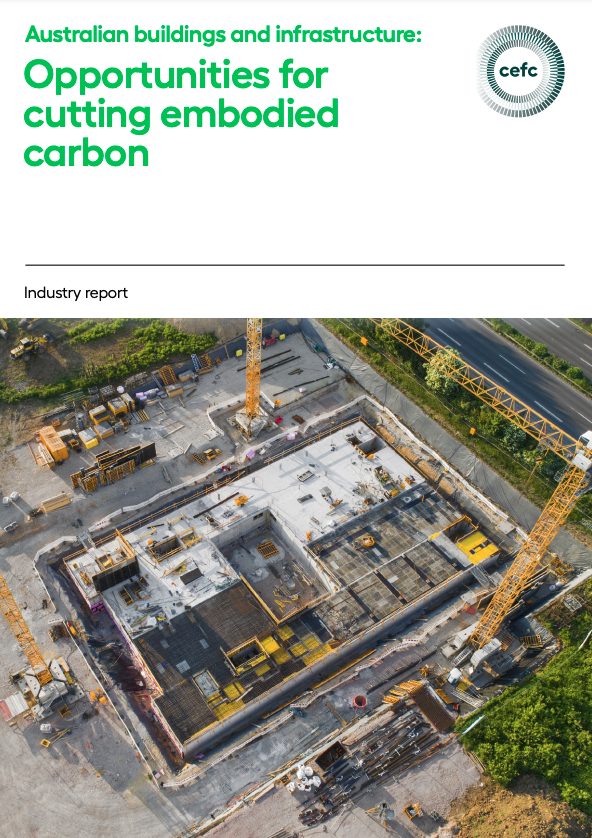
Insights
Australian buildings and infrastructure: Opportunities for cutting embodied carbon
Practical guidance on material and design initiatives that can reduce embodied carbon in the built environment
This report helps quantify the challenge and identifies solutions and opportunities for builders to reduce the carbon footprint of construction. In an Australian first, it outlines a range of material and design initiatives that can reduce embodied carbon in new projects, as well as the cost of implementation.
About this report
Australian buildings and infrastructure: Opportunities for cutting embodied carbon
November 2021
Australian buildings and infrastructure: Opportunities for cutting embodied carbon was developed by the CEFC together with the Green Building Council of Australia and the Infrastructure Sustainability Council.
Read moreAustralian developers and builders do not have to choose between saving money and protecting the environment. Instead, they can take advantage of the latest in sustainable material and design innovations that will reduce emissions without incurring higher costs. It’s a win for the environment and the building sector.
about the industry
Building and construction market drivers
- The building and construction sector accounts for 39 per cent of global emissions and represents a great opportunity to help Australia transition to a low emissions economy.
- Embodied carbon emissions are expected to account for almost half of total emissions from new constructions between 2019 and 2050, with concrete, steel and aluminium considered some of the more challenging materials to decarbonise.
- As a thriving industry that employs many Australians and adds significantly to the economy, it is critical that the building and construction sector makes the transition to lower emissions as smooth as possible.
report findings
Market potential
- The report identifies great potential in the building sector to cut emissions, finding that on average, sustainability rated infrastructure projects achieve a reduction of up to 33 per cent in embodied carbon compared to similar designs with no such measures.
- It is possible to achieve as much as 18 per cent reduction in embodied carbon and save as much as a three per cent reduction in material costs for typical building and infrastructure projects.
- Alternative solutions for reducing embodied carbon and related emissions include geopolymer concrete, concrete admixtures, recycled materials and high strength steels.
- The economic value of the Australian construction materials sector is approximately $65 billion. As the market continues to mature in its awareness of embodied carbon materials, demand for low embodied carbon solutions could result in a potential billion dollar low carbon solutions market in coming years.





